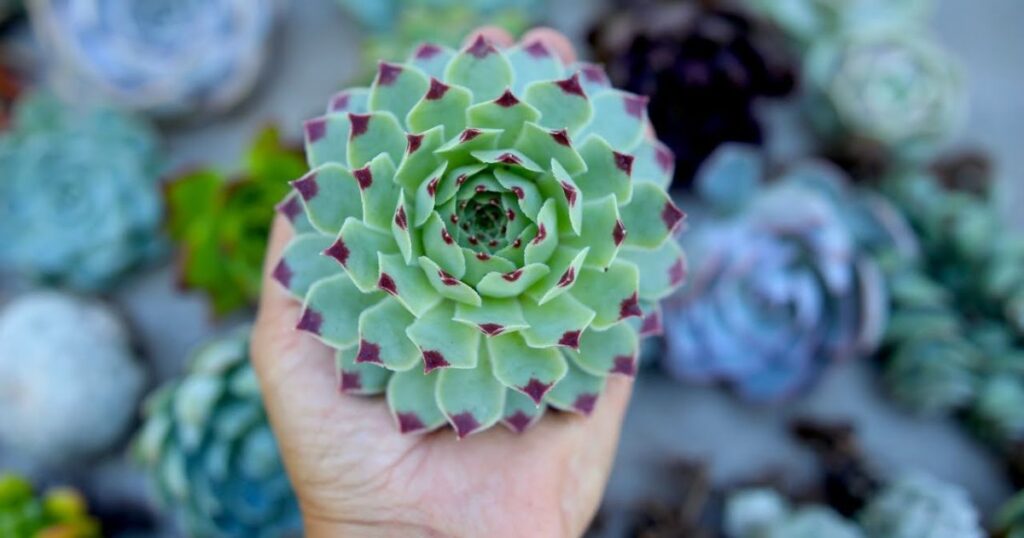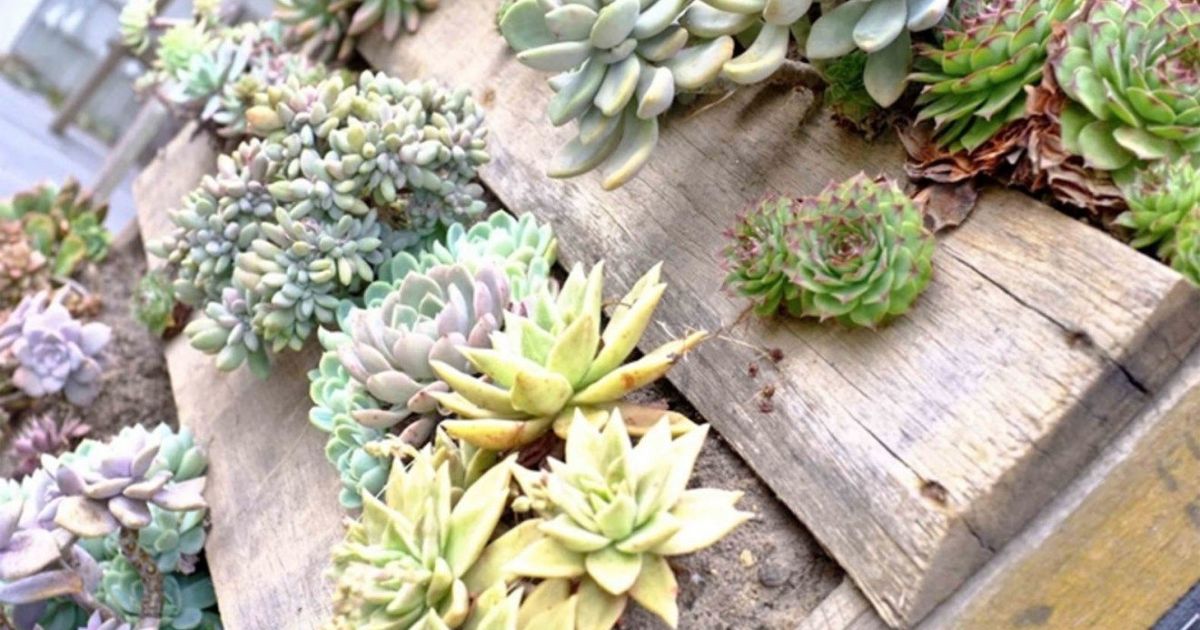Succulents thrive in sunlight and should generally be placed in the sun. However, the amount of sunlight they need varies by species. Most succulents benefit from bright, indirect sunlight, while some can tolerate full sun. It’s essential to find the right balance to prevent sunburn and ensure healthy growth.
Are your succulents getting the right amount of sun to flourish? The question of “Should Succulents Be in the Sun” is pivotal to their well-being. Discover the perfect sun exposure for your succulents and transform them into vibrant, thriving beauties with our essential guide. It’s time to take action and provide your succulents with the sunlight they deserve.
Succulents should be in the sun, but the amount of sunlight they require varies by species. Most succulents thrive in bright, indirect sunlight, while some can tolerate full sun exposure. Finding the right balance is crucial to ensure their optimal growth and health.
Understanding the Sunlight Needs of Succulents
Before we delve into the question of whether succulents should be in the sun, it’s crucial to understand the varying sunlight needs of different succulent species.
Full Sun Succulents
Some succulents, like Sempervivum (hens and chicks) and Echeveria, thrive in full sun. They require at least six hours of direct sunlight daily for optimal growth and vibrant coloration.
Part Sun Succulents
Many succulents fall into this category, including Aloe and Agave. They prefer bright, indirect sunlight and can tolerate some direct sun, but should be protected from scorching afternoon sun. If you’re wondering, succulents need full sun It’s essential to know that not all succulents require full sun exposure.
Low Light Succulents
A few succulents, such as Haworthia and Gasteria, are adapted to low light conditions and should be kept in partial shade or filtered sunlight.
Indoor Succulents
For succulents kept indoors, like the popular Snake Plant (Sansevieria), bright indirect light or a few hours of morning sun are ideal. They should be shielded from intense midday or afternoon sun.
| Type of Succulent | Light Preference | Sunlight Needs | Examples |
| Soft Succulents | Filtered or Indirect Sunlight | Bright, Indirect Light | Echeveria, Kalanchoe, Haworthia |
| Sedum | |||
| Hardy Succulents | Full Sun | Direct Sun, Outdoors Preferred | Agave, Sempervivum, Aloe |
| Bright, Indirect Light Accepted | Opuntia (Prickly Pear Cactus) |
Photosynthesis
Sunlight is essential for photosynthesis, the process by which plants convert light energy into food. Succulents, like all green plants, rely on photosynthesis to produce energy for growth and maintenance.
Coloration
Many succulents develop their vibrant colors when exposed to the right amount of sunlight. Insufficient sunlight can lead to pale, washed-out appearances, while excess sun may cause sunburn or color changes.
Compact Growth
Adequate sunlight promotes compact and sturdy growth in succulents. Plants that receive too little light may become leggy as they stretch to reach the sun.
Flowering
Full sun exposure often encourages succulents to produce flowers. The colorful blooms of many succulent species add to their charm.
Potential Problems with Too Much Sun
While sunlight is essential, excessive exposure can lead to issues. Here are some potential problems when succulents receive too much sun.
Sunburn
Succulents can get sunburned, just like our skin. Sunburn appears as brown or white patches on the leaves, and it can be irreversible.
Overheating
Intense sun can cause overheating, leading to stress, wilting, or even the death of a succulent.
Dehydration
Hot, direct sun can lead to rapid moisture loss, dehydrating the plant. Succulents may need more frequent watering in these conditions.
Protecting Succulents from Sun Damage

To ensure your succulents thrive and avoid sun-related problems, here are some protective measures:
Shade Cloth
Use shade cloth or sheer curtains to provide filtered sunlight during the hottest part of the day, especially for succulents that prefer part sun.
Acclimate to Sunlight
Gradually introduce succulents to more sunlight if they have been in low-light conditions. This helps prevent sunburn and stress.
Monitor Temperature
Be aware of extreme temperature variations in your region. Move succulents indoors or provide shade during heatwaves.
Signs Your Succulents Need More Sun
Recognizing when your succulents are not receiving enough sunlight is crucial. Here are some signs.
Leggy Growth
If your succulents are stretching and becoming leggy, they are likely not receiving sufficient sunlight.
Fading Colors
Pale or washed-out colors in your succulents indicate a lack of sunlight.
Reduced Growth
Slowed growth and decreased flowering can also be signs of insufficient sunlight.
Elongated Stems
Elongated stems with more space between leaves are a clear indicator of not enough light.
The Role of Seasonal Changes
Understanding the role of seasonal changes in succulent care is vital. Succulents may have different sunlight requirements depending on the time of year.
Winter Sunlight
Succulents often require more sunlight during the winter months when the sun is less intense and daylight hours are shorter. Move them to a sunnier spot or use grow lights.
Summer Sunlight
In summer, when the sun is more intense and days are longer, some succulents may benefit from some shade during the hottest part of the day.
How to Find the Right Sunlight Balance
Finding the right sunlight balance for your succulents involves a few essential steps:
Know Your Succulent
Research the specific sunlight requirements of your succulent species to provide the optimal conditions.
Observe Light Conditions
Regularly observe the light conditions in the area where you keep your succulents. Note how much direct or indirect sunlight they receive.
Rotate Your Succulents
To ensure even growth, periodically rotate your potted succulents to expose all sides to sunlight.
Experiment and Adjust
Don’t be afraid to experiment with different locations to find the best balance for your succulents. Be prepared to adjust their placement as needed.
Common Succulent Sunlight Preferences
Let’s take a closer look at the sunlight preferences of some common succulent species:
Sunlight Preference
Full sun, at least 6 hours of direct sunlight daily.
Key Characteristics
Echeverias develop stunning rosettes and vibrant colors when provided with ample sunlight.
Aloe Vera
Sunlight Preference
Part sun, bright indirect light with some direct sun.
Key Characteristics
Aloe vera prefers a good balance of sunlight and can tolerate a range of conditions.
Sunlight Preference
Low to moderate light, partial shade or filtered sunlight.
Key Characteristics
Haworthias are well-suited for low-light conditions and can be kept as indoor plants.
Sedum
Sunlight Preference
Full sun to part sun, at least 4-6 hours of direct or indirect sunlight.
Key Characteristics
Sedums are versatile and adapt well to various light conditions, making them popular choices for gardens.
FAQ’S
Can a succulent get too much sun?
Yes, succulents can get too much sun, which can lead to sunburn and damage. It’s important to provide them with the right amount of sunlight to thrive.
How often should you water succulents?
Water succulents sparingly, allowing the soil to dry between watering, typically every 2-4 weeks, depending on environmental factors.
Should succulents be inside or outside?
Succulents can thrive both indoors and outdoors, depending on their specific needs and local climate conditions.
Conclusion
The question of whether succulents should be in the sun is multifaceted. While many succulents thrive in sunlight, the specific requirements vary by species, and even within species, individual needs can differ. Understanding these preferences and observing your succulents’ responses to sunlight is key to their well-being. By striking the right balance and providing the optimal light conditions, you can enjoy healthy, vibrant succulents that will continue to captivate with their unique beauty and resilience.










